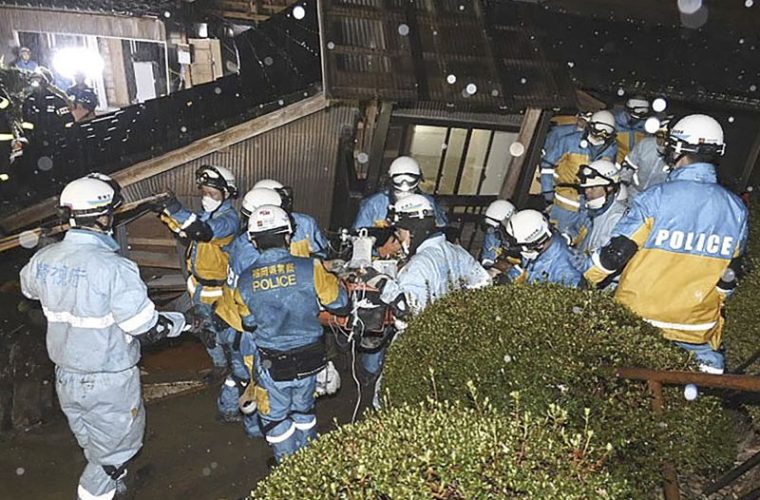
What Our Energy Future Be? A Few Ideas
Access to energy has long been taken for granted as society became quite used to relatively stable prices and the ample abundance of energy. Meanwhile, the business side of energy was relegated to industry insiders, policymakers, and market traders dealing with the matter as a profession. However, the perceptible rise in prices and the fear of supply shortages have pushed energy considerations to the forefront of societal consciousness.
This crunch has largely resulted from US government policies, such as the Green New Deal and the cancellation of the Keystone pipeline, that deliberately discouraged capital investment for the future production of fossil fuels in favor of focusing the energy economy toward clean energy. The transition to electric vehicles (EVs) is a huge focus in government plans for a clean energy future while also raising serious issues regarding the feasibility of revamping the energy infrastructure to accommodate this change.
Global issues, including the government shutdowns in response to the covid-19 pandemic affecting demand, supply chain disruptions affecting supplies, the geopolitical turmoil of the Russian war in Ukraine, and changes in oil production targets by the Organization of Petroleum Exporting Countries, not to mention central bank interference and government spending, have sent shockwaves through all aspects of the world economy and much of it comes down to energy. Today, the energy discussion revolves around trends in the long-term outlook — the desire to move away from fossil fuel energy sources and the search for effective green and sustainable alternatives to fossil fuels. At the heart of these challenges lies the alarmist doctrine of climate change, which drives government policies and hinders the economy’s search for the best energy future.
Energy Transition
For little more than a century and a half now, the world population has flourished thanks to the cheap and abundant energy from fossil fuels including coal, oil, and natural gas. Recent sentiment in the last decade has identified carbon emissions from the use of fossil fuels as a major issue that needs to be urgently addressed. Leading developed nations have pushed policies to promote green and carbon-free energy alternatives, such as wind and solar. However, the feasibility of phasing out fossil fuels in the manner usually prescribed falls short of realistic expectations.
While testifying on infrastructure and discussing how much power would be required for the mass adoption of electric vehicles, US Secretary of Transportation Pete Buttigieg was taken by surprise when Congressman Thomas Massie informed him that charging an EV would be the equivalent of running twenty-five refrigerators. Meeting the US government’s goals will not only be unrealistic but actually unattainable with the prevailing policy trajectory—the throttling of existing energy sources and the lack of viable clean replacement sources.
The current electrical grid in the US simply cannot meet the goal of transitioning to EVs as quickly as policymakers are demanding. Meanwhile, the current carbon-free alternatives are not as reliable in producing the needed consistent baseload energy as proponents suggest. Thus, there is an unrealistic opportunity cost in moving the energy infrastructure in this direction. Generating that much electricity with green and carbon-free energy sources like wind and solar would be enormously costly, while fossil fuels have fallen out of favor. This is where nuclear and geothermal energy can step in if government regulation can step out of the way.
Nuclear
Most current nuclear power plants work through the nuclear fissioning of uranium fuel pellet rods, causing a chain reaction of splitting atoms in a nuclear reactor. The fissioning releases a large amount of heat that raises the temperature of a circulating fluid, usually water, which can generate steam. That steam is then used to drive turbines that produce carbon-free electricity. Nuclear power has already been recognized as an efficient, clean, and safe source of baseload energy. The last point may surprise those who remember the names Hiroshima, Chernobyl, Three Mile Island, and Fukushima and the massive nuclear disasters associated with them. The fear of these dangerous scenarios has pushed public opinion and public policy against nuclear power, making it a highly regulated industry.
However, the reputation of nuclear power has been changing in recent years since the Fukushima disaster. Negative sentiments toward nuclear power have shifted as many countries have developed and implemented it as part of an overall energy mix as a means to improve energy security, reduce the impact of volatile fuel prices, and make their economies more competitive while also addressing climate change goals. The European Union has gone as far as labeling nuclear (along with gas) a green and sustainable energy. In January 2023, the US Nuclear Regulatory Commission certified NuScale Power’s design for small modular reactors, a milestone in the potential production of uniform and scalable nuclear reactors for the near future.
Future developments point in the promising direction of cutting-edge liquid salt thorium-fueled reactors, which take advantage of this relatively abundant metallic element to produce energy and reduce radioactive waste several hundred times more efficiently than with uranium reactors. The path forward for nuclear energy involves rolling back regulations that have hindered its development, in part due to its soured reputation in previous decades. Nuclear energy remains a highly regulated industry with the major issues of reactor safety and nuclear waste disposal among the top concerns among policymakers. However, with its potential to provide effective, scalable, and carbon-free energy, nuclear energy should serve as a key source of energy to the world.
Geothermal
Compared to nuclear energy, geothermal energy is not as well-known and is even less well understood compared to other energy sources. Extremely hot molten rock lies under the surface of the earth. The most common way of capturing geothermal energy is by drilling vertically down into the earth’s surface to access that hot rock. Cool water is then heated by the rock to produce steam, which rises to the surface, and that steam is used to drive electric generators.
This type of energy is already used in many places in the world that have access to hot rock closer to the surface of the earth, such as around locations with high volcanic activity like Indonesia and Iceland. For now, that’s the only type that can be profitable and makes economic sense. However, the future of using geothermal energy will depend on the development of deep geothermal energy, whereby even deeper holes are drilled to access hotter rock formations, which would not be location dependent. Here, the techniques and technology developed by the shale-oil drilling industry, such as horizontal drilling, can be repurposed and refocused to tackle the challenge of accessing deep geothermal energy. This helps put the oil and gas industry in a position to help in the energy transition rather than simply dropping them entirely, as popular policy dictates.
Despite rhetoric against fracking techniques in the industry, the US Government has only restricted new permits for oil and gas projects on federal lands and waters without outright banning fracking. At this point, policymakers will either go down the route of adding further controls on the industry, including on horizontal fracking techniques, or it will recognize the value of these methods in their application to geothermal energy and pursue the potential of harnessing this energy source.
Future Energy
In considering actionable goals for now, developed economies can look into some options both domestically and with international or region-specific cooperation toward advancing the infrastructure needed for an energy transition. This can start with scaling up existing conventional nuclear facilities that do not need to overcome legal and permitting hurdles. From there, the target for roughly the next decade could focus on rolling out the research and development for advanced nuclear facilities using thorium for the nuclear fuel cycle rather than uranium. Meanwhile, the expertise of the oil industry can be harnessed to develop effective horizontal drilling for access to deep geothermal energy.
Overcoming regulatory obstacles, which kneecap current energy industries while pushing impractical climate objectives, as well as harnessing these two sources of energy may give humanity a realistic shot at truly clean, sustainable electricity that will move the energy paradigm away from fossil fuels while also acknowledging their legitimate and relevant role in the immediate future.




